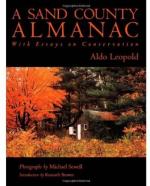|
This section contains 274 words (approx. 1 page at 400 words per page) |

|
Chapter 17, Oregon and Utah and Chapter 18, Manitoba Summary and Analysis
This chapter introduces invasive species, or animals and plants that are foreign to the land and have flourished at the expense of the natives species. Ecological stowaways began arriving with the earliest European settlements. They spread faster than the settlers themselves. The biggest problem in the northwestern foothills was cheat grass, or downy chess. Today, the honey colored hills of the northwest mountains are covered by cheat grass, and not by the useful bunchgrass or wheatgrass that used to cover it. The main reason that cheat flourished in the northwest was because of overgrazing. The cattle loved eating wheatgrass and bunchgrass and something needed to cover the bare land. Cheat grows in thick strands, and each stem has a mass of prickly awns that makes the plant inedible for...
(read more from the Chapter 17, Oregon and Utah and Chapter 18, Manitoba Summary)
|
This section contains 274 words (approx. 1 page at 400 words per page) |

|




